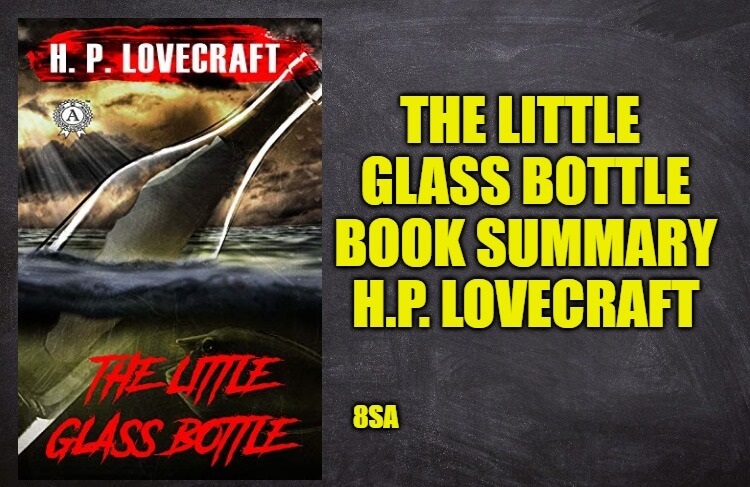What is the summary of the story The Little Glass Bottle by H.P. Lovecraft? Information about the characters and the summary of The Little Glass Bottle by H.P. Lovecraft.

The Little Glass Bottle
“The Little Glass Bottle” is a short story by H.P. Lovecraft, first published in the November 1919 issue of The Vagrant. The story is written in the first person and tells the tale of a man who finds a mysterious glass bottle while digging in his garden. The bottle contains an unknown liquid and a strange, unreadable inscription. The man becomes obsessed with the bottle, trying to decipher the inscription and discover the liquid’s properties.
The story is a classic example of Lovecraft’s themes of cosmic horror and the insignificance of human existence in the face of the vast and incomprehensible universe. The bottle and its contents serve as a metaphor for the unknown and unknowable aspects of the universe, and the protagonist’s obsession with it reflects humanity’s futile attempts to understand and control the forces of the cosmos. The story also touches on the idea of forbidden knowledge, as the protagonist becomes increasingly desperate to uncover the secrets of the bottle, despite the warnings of those around him.
Summary
“The Little Glass Bottle” is a story that follows the journey of a man who finds a mysterious glass bottle while digging in his garden. The bottle contains an unknown liquid and a strange, unreadable inscription. The man becomes obsessed with the bottle, trying to decipher the inscription and discover the liquid’s properties.
The story starts with the protagonist digging in his garden and finding the bottle. He initially thinks nothing of it and sets it aside, but as he continues to work, he can’t shake the feeling that the bottle has a strange significance. He takes the bottle home and examines it more closely, and discovers the inscription and the scent of the unknown liquid. He becomes obsessed with the bottle and starts to research the inscription, visiting scholars, linguists, and alchemists, but none of them are able to provide any answers.
As the man’s obsession grows, he starts to have strange dreams and hallucinations. He starts to see himself in a dark, ancient room, surrounded by strange symbols and mysterious figures, and the liquid in the bottle appears to change color and consistency at different times.
His obsession starts to take a toll on his mental and physical health, as well as his relationships with those around him, he starts to become paranoid and isolated. He refuses to let anyone else touch the bottle and becomes increasingly obsessed with it. The climax of the story comes when the man finally breaks the bottle in a fit of desperation and the liquid spills out, consuming him and his house. The story ends with the implication that the man has been transported to another dimension, where he is now trapped forever in the ancient room from his dreams.
The story is a classic example of H.P. Lovecraft’s themes of cosmic horror and the insignificance of human existence in the face of the vast and incomprehensible universe. The bottle and its contents serve as a metaphor for the unknown and unknowable aspects of the universe, and the protagonist’s obsession with it reflects humanity’s futile attempts to understand and control the forces of the cosmos. The story also touches on the idea of forbidden knowledge, as the protagonist becomes increasingly desperate to uncover the secrets of the bottle, despite the warnings of those around him, ultimately leading to his downfall. The story also touches on the idea of the unknown, and how humans cannot comprehend the vastness of the universe, and how their attempts to do so, can lead to their own destruction.
Characters
The main character in H.P. Lovecraft’s “The Little Glass Bottle” is the protagonist, a man who finds the titular bottle while digging in his garden. He is not named in the story, but is described as being curious and determined, but also increasingly paranoid and isolated as his obsession with the bottle grows.
Other characters in the story include the scholars, linguists, and alchemists that the protagonist visits in an attempt to decipher the inscription on the bottle. These characters are not described in great detail, but are mainly used to highlight the protagonist’s growing frustration and desperation as he searches for answers.
There are also several characters that appear in the protagonist’s dreams and hallucinations, including strange figures and mysterious symbols. These characters are symbolic and are not fully developed, they are used to represent the vast and incomprehensible universe and the protagonist’s attempts to understand it.
In the end, the protagonist is consumed by the unknown liquid, and there is no other character that could be considered as a protagonist after him.